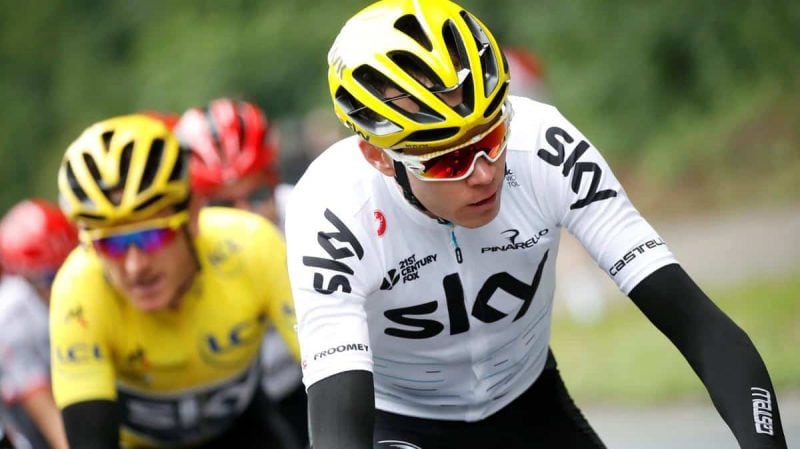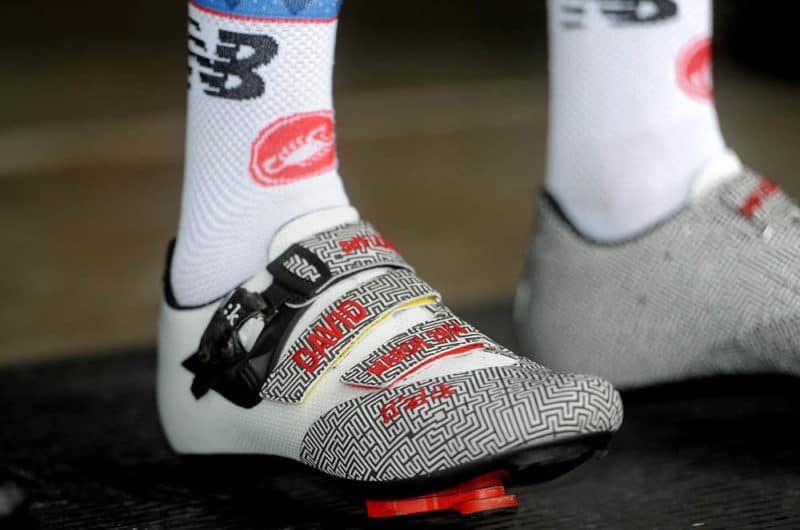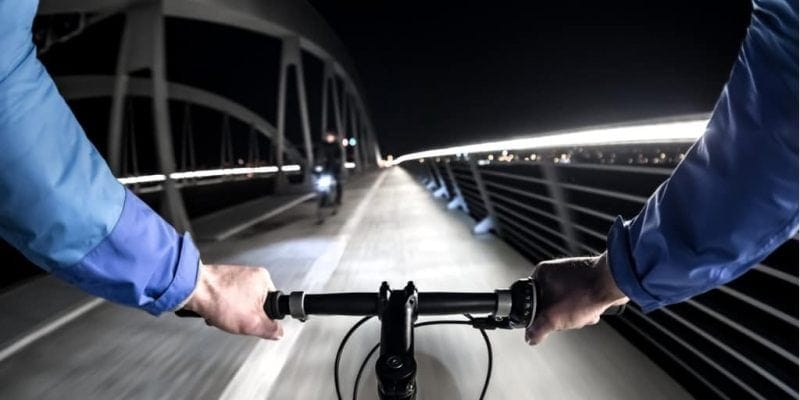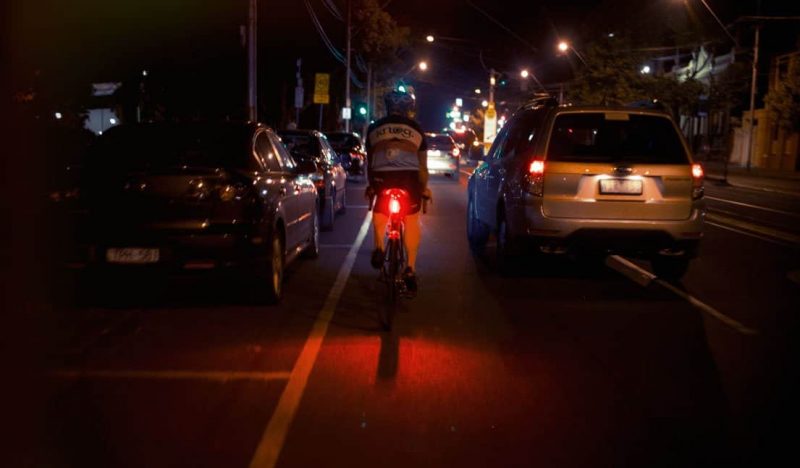23 Bunch Ride Etiquette Every Road Cyclist Should Know
Road riding is growing in popularity. This is a positive, but with the masses come to an assortment of people. Personalities, experience, athletic ability, and general cycling knowledge differ greatly.
Cyclists everywhere meet up at local parks, bike, or coffee shops to share their love of the sport. Group rides are a great motivator and fun, but just like other social situations, there is an unspoken code of etiquette.
What makes up the code? And are you guilty of violating one or more of its silent rules?
Let’s discuss road riding etiquette that every cyclist should know, and then you can answer that question yourself.
Arrive Early and Introduce Yourself
Whether you ride your bike to join the group or drive, be on time. Be early in fact. Parachuting in at the last minute and/or rushing to get yourself and your bike ready while others wait is bad manners.
You hold up the group and the time schedule. You may have nothing to do afterward, but what about the rest of the bunch?
Arrive early enough to introduce yourself and have a chat with the other riders. If this is your first ride, or if you’ve invited a few new riders to the group, share this information and ask about the route, pre-assigned stops or waiting points, the general pace, etc
Stow Your Stuff Securely
Are your personal things securely stowed in your pockets?
Is your saddle bag hanging on a thread?
Are your water bottle cages tight and lights properly installed?
This may seem like a small thing, but objects that fall when riding in a group can cause damage to other people’s bikes (wheelsets aren’t cheap), or worse, provoke an accident. Batten down the hatches before you roll out.
Read More : 10 Essentials I Bring in My Saddle Bag
Avoid Riding A Noisy Bike
Most roadies have little tolerance for phantom noises and rattling coming from their bike when they’re riding alone, so the irritation is only amplified when out in a group.
Lube that chain, stop those brake pads from rubbing or squealing, tighten loose bolts and pinpoint the source of that mysterious creaking or knocking.
Punish your own ears, but don’t force it on others.
Read More : 7 Basic Bike Maintenance Tips for All Cyclists
Be Self Sufficient
Road rides require a certain amount of clothing, tools, water, and nutrition to make them successful. The longer and harder the ride, the more you need to be prepared.
Don’t rely on others to bum a gel or a spare tube, use their pump, ask for water or a jacket to get you through. Once in a while is fine, when you really get caught out, but don’t build a rep!
Read More : 11 Easy Ways to Minimize Punctures
Keep Aerobars, TT and Single Speed Bikes at Home
Time Trial bikes and aerobars don’t belong on group rides. Their handling can be sketchy and the rider position impairs braking.
While it is possible to ride a single speed in a group successfully, take a good look at your single speed skills to evaluate if you’re up to snuff.
If not, you’ll be constantly blowing the group apart as lag at some points and surge on others.
Ride in a Predictable Manner
Road cycling involves riding in a straight line unless diverting your path to avoid obstacles or descending a twisty road. To keep the group safe and together, it’s vital to ride in a predictable manner.
The person behind you is following your lead, so don’t brake suddenly, swerve unexpectedly, or otherwise ride like a squirrel.
Keep it straight and steady.
Stop Freewheeling
A peloton works as a group, so it’s important to keep the rhythm going.
If you sit up (stop pedaling) while the others are at work, your bike surges backward. This can kill the tempo and be detrimental when climbing, especially when you catch others off guard.
Freewheeling also leads to half-wheeling from behind, which is dangerous and can cause crashes.
Stop at Red Lights
Red lights control traffic and direct the safe flow of all vehicles. Bicycles aren’t cars, but they are considered vehicles and are required by law to respect red lights and other traffic signals.
If you’re tempted to blow a light when riding alone, that’s at your own risk, but when in a group, safety comes first, so don’t do it.
Use Hand Signals and Point Out Road Hazards
You may not know the official hand signals, but you can communicate the direction you intend you go.
Hand signals aren’t just for left and right turns, they’re essential when moving out of the paceline, to show you’re slowing down, red lights and intersections, pointing out slower riders and other obstacles on the road for others to avoid.
If someone is behind you, you’re the responsible party.
Know When Not to Talk
Having a conversation is a great way to pass the time when on a group ride, especially if it’s a long or flat route. Chatting is a fantastic way to learn something, get to know others, and share a joke or a story.
However, there is a time and a place for everything. When and if things get down to business, it’s time to clam up.
Some cyclists use their time on the bike to reflect, work out certain problems. Constant chatter and banter can be annoying, especially when you’re not as fit and are trying to keep up.
If the person next to you isn’t too chatty, take the hint, try silence, or move next to someone else.
Read More : How to Find A Good Balance Between Riding and Family Time
Ride Two Abreast
A large group can be a road hazard, a swarm of cyclists destined to annoy the heck out of some drivers. Keep it tidy and ride only two abreast for the group’s safety.
Two is also often the maximum allowed by local road regulations. And double-line groups are more visible to oncoming traffic and easier to overtake by cars when the opposite lane is clear.
Respect the Bunch’s Pace
Different groups ride at different levels and for particular reasons (i.e. beginners, recovery ride). If you find the speed isn’t to your liking, drop out and ride on your own or find another group instead of pushing the pace.
You don’t get to set the group speed, the group does, so get with the program or be on your way.
Don’t Half-Wheel
A rider next to or behind you that is constantly half-wheeling is a major pain for everyone, except the person doing it. It’s a constant message they don’t think you’re going fast enough for them and pressures everyone to ramp up the pace.
It’s rude and dangerous too, so pay attention to your front wheel and don’t do it.
Keep Your Hands on the Handlebars
Riding in a group requires being in close quarters. Other members are centimeters away from your handlebars and rear wheel.
Removing your hands from your bars may cause your bike to stray just enough to strike a rider around you.
If you need a free hand(s) for something, plan ahead and safely move out of the group instead of potentially bringing it down.
Don’t Ride With Headphones
No headphones. Ever.
Rider’s need all of their concentration and 100% of their available senses to ride safely in a group.
If you want to rock out, not miss any calls, or catch up on that podcast you like, ride on your own or break out the home trainer.
Pull Longer, Not Harder
We feel stronger on some days than others. If today is that day, do more work upfront by taking longer pulls. Riding at the front takes about 30% more energy than being in the bunch.
Your job is to keep the pace steady, avoid braking, and lead the group. Pulling longer and not harder is a great workout and you’ll earn respect from the rest of the group.
Overtake on the Outside
If you need to overtake a slower rider in front of you, do so to the outside, which should be in the same direction as the traffic flow.
Before you overtake, look behind you and verify that no vehicles are on coming. Then signal to the rest of the group and make your move.
Move Away to Blow Your Nose or Spit
A disgusting topic, yes, so for anything involving bodily fluids, don’t afflict it on others. If you don’t have a tissue and you have to blow your nose, use your clothing.
If you’re going for the forcible blow method, please, please, please move out of the paceline first, and then drop off to the back to do what you have to do.
The same goes for spitting. If you’ve swallowed a bug or absolutely have to spit, raise your shoulders like a shrug, raise your left elbow a bit, and do the deed under your arm, practically grazing your armpit. This will send your gift to the world directly toward the ground and not in the wind or onto someone else.
Mind the Gap
Maintaining a tight formation when you’re riding in a group is important for speed and efficiency. The larger the gap between riders, the slower and the least productive the group will be.
Do your part by not opening a gap between you and the rider in front, especially when everyone is working hard. If you’re out of gas, safely move out of the pack to the back.
Don’t Be A Whiner
We don’t ride in a group solely for exercise, it’s supposed to be fun. Don’t be a wet blanket by complaining about the speed, climbing hills, the weather (if it’s yucky), or anything else.
If you’re feeling down, concentrate on being out in nature and focusing on the positive things in life instead of being a sour puss. It’s a better use of your energy and won’t bum out others either.
It’s Not a Race
You’ve been riding in the back all day and have taken no turns upfront, but now the group is in the final stretch back to the barn and you’ve attacked, guns blazing.
It’s not a race, and if you have that much energy at the end, you weren’t doing enough during the ride.
It’s called a group or bunch ride for a reason.
Wear Clean Clothing That Isn’t Threadbare
Wearing non-washed clothing that stinks to high heaven is not okay. The odor doesn’t linger around you, it wafts to those behind. No one wants to be a victim of your nasty B.O.
And let’s talk about those threadbare, see-through shorts. Others don’t want to look at your caboose in that much detail for the entire ride. Cycling shorts have a life.
Get some new ones!
Be Polite and Say Hello to Other Cyclists
I’m at a loss why some riders don’t say hello or acknowledge other cyclists or groups. If you are passing someone or being passed, say hello, wave your hand, nod your head, something. Try at least.
A broken-down cyclist on the side of the road? Check if they need something.
Maybe their tube is bad or their chain broke and they don’t have the right tool. A little help can go a long way. We are all in this sport together and should act like it.
A true cyclist will do so, the rest are posers!




